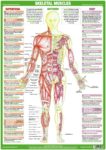Obsessive-Compulsive Disorder (OCD) and Movement Disorders in Psychiatry Anatomy
Obsessive-Compulsive Disorder (OCD) is a psychiatric condition often overlooked compared to other disorders. It is characterized by intrusive obsessions that produce anxiety or tension, and compulsions aimed at stress or anxiety reduction. The lifetime prevalence is approximately 2.5 per cent, but the disorder is seen far more often in general practice due to its chronicity and severity.
The most common movement disorders comorbid with OCD are the tic disorders. Family studies on the relationship between OCD and tic disorders indicate a familial tic related OCD subtype which is associated with characteristics such as early age at onset, male gender and tic-like compulsions besides the classical compulsions.
Goal-directed behavior, such as compulsions, is orchestrated by the basal ganglia, through parallel but interconnected frontalstriatal circuits. Dysfunction of these frontalstriatal circuits is known to play a role in the pathogenesis of tic-disorders and may also underlie OCD.
Other hyperkinetic movement disorders, in which frontalstriatal impairments are documented, are also hypothesized to be associated with OCD but have been largely understudied in relation to OCD in comparison with tic disorders. The most convincing evidence for a relationship was found between the choreas (Huntington’s disease and Sydenham’s chorea) and OCD/OC symptoms. Furthermore, elevated frequencies of OC symptoms were found in small case control series of dystonias.
Many investigators have contributed to the hypothesis that OCD involves dysfunction in a neuronal loop running from the orbital frontal cortex to the cingulate gyrus, striatum (cuadate nucleus and putamen), globus pallidus, thalamus and back to the frontal cortex. Organic insult to these regions can produce obsessive and compulsive symptoms.
The relationship between OCD and movement disorders needs further elaboration using larger family based longitudinal studies and sound instruments to characterize OC symptomatology. This could lead to better understanding of the shared pathology between OCD and hyperkinetic movement disorders.



